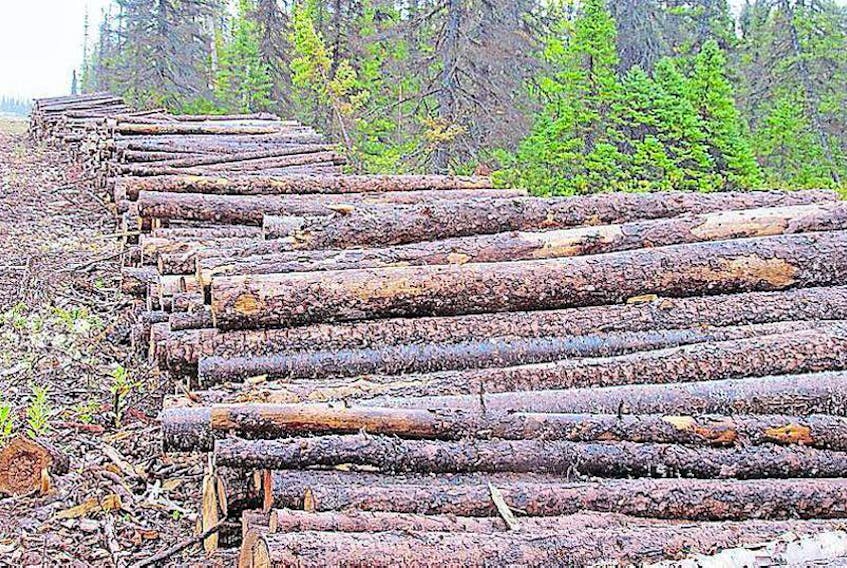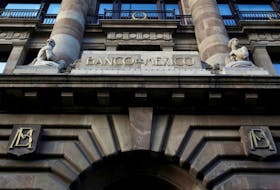NORTHERN PENINSULA, NL — An environmental group is advising the Canadian government to protect the boreal forest from clearcutting.
And that’s a topic that may be of interest to residents on the Great Northern Peninsula.
The National Resources Defense Council (NRDC) is an international non-profit environmental organization headquartered in New York City, with three million members and online activists.
Their analysis has indicated that clearcutting in Canada’s boreal forest worsens climate change.
And one of their analysts has told the Northern Pen it affects local life as well.
The NRDC says clearcutting “unleashes significant emissions of carbon dioxide locked in soil, creating a threat to the global climate crisis.
“Clearcutting degrades and disturbs the boreal forest’s ability to store carbon, by removing most living trees and damaging forest soils and peatlands in the process,” according to an NRDC press release.
The Great Northern Peninsula has a boreal forest like most of Canada. Clearcutting on the peninsula could also have a more localized impact, says Josh Axelrod, a policy analyst with NRDC’s Canada Project.
“It’s done by heavy machinery, requires building a lot of roads,” he said. “It can be done better than other ways, but the way it’s done in a lot of the boreal that we’ve seen is to disturb a lot of the soils, to disturb the other plant matter besides the trees, and it then takes the forest a very long time to recover.”
Axelrod believes, in many cases, it could take 120 or more years for the forest to recover completely after clearcutting – if it ever comes back, he adds.
He says you can also see negative changes to local wetlands, peatlands, rivers and streams when clearcutting is conducted.
These sentiments echoed those expressed by Leander Pilgrim, a former Main Brook mayor and a resident with a lifetime of experience in the industry, in previous editions of the Northern Pen.
“You’re flattening everything,” said Pilgrim. “The terrain is torn to pieces with this heavy equipment and there’s not a hope in hell for it to re-populate in the time of our children and grandchildren.”
However, there is some dissent from this position.
Glenn Payne, a forestry instructor at College of the North Atlantic in Corner Brook, told the Northern Pen in its Oct. 25 edition that clearcutting would be the most environmentally safe method of harvesting the forest.
Payne felt doing selective cutting, as an alternative, was “highly inappropriate” for Newfoundland forests and, more broadly, the boreal forest in general.
What does Active Energy have in mind?
Leander Pilgrim started expressing his concerns after it was reported that Active Energy Group – a London, UK-based company – was interested in harvesting the Great Northern Peninsula’s forests to use for its wood pellet product.
Axelrod says Active Energy’s proposed harvest, from its press release, isn’t huge but the question is how big its impact would be on the peninsula given how small the forest is.
As to whether the operation will undertake clearcutting on the Great Northern Peninsula, Active Energy CEO Richard Spinks did not say for sure.
He told the Northern Pen that to determine the type of harvesting – clearcut or selective cut – Active Energy Group/Timberlands International Ltd (AEG/TIL) will follow the guidelines and the rotation set in the Forest Management Agreement and the operational five-years forestry plan as agreed with and approved by the Newfoundland and Labrador Department of Fisheries and Land Resources.
He said the type of cut would depend on the age/rotation and health of the forest.
Spinks added that AEG/TILNL will also have a re-planting/re-forestation program for the areas subject to the cut to maintain and grow the current inventory level of the forest in District 17 and 18.
According to an emailed statement from the Department of Fisheries and Land Resources Nov. 3, “the department is continuing to evaluate details of the AEG proposal submitted to the provincial government.
“No decisions have been made at this point.”
Regarding harvesting techniques, the department “follows environmental protection guidelines for ecologically based forest resource management, which guide the style of harvesting employed in forestry operations in the province.”
“Harvesting methods are also influenced by geography, environmental regulations and wildlife habitat retention, which results in harvest openings of various sizes and configurations.”









